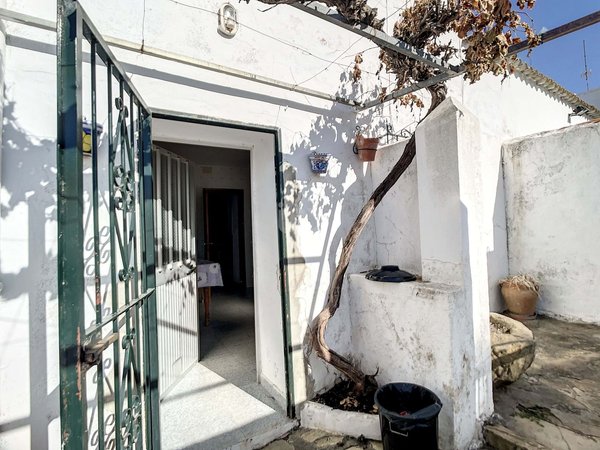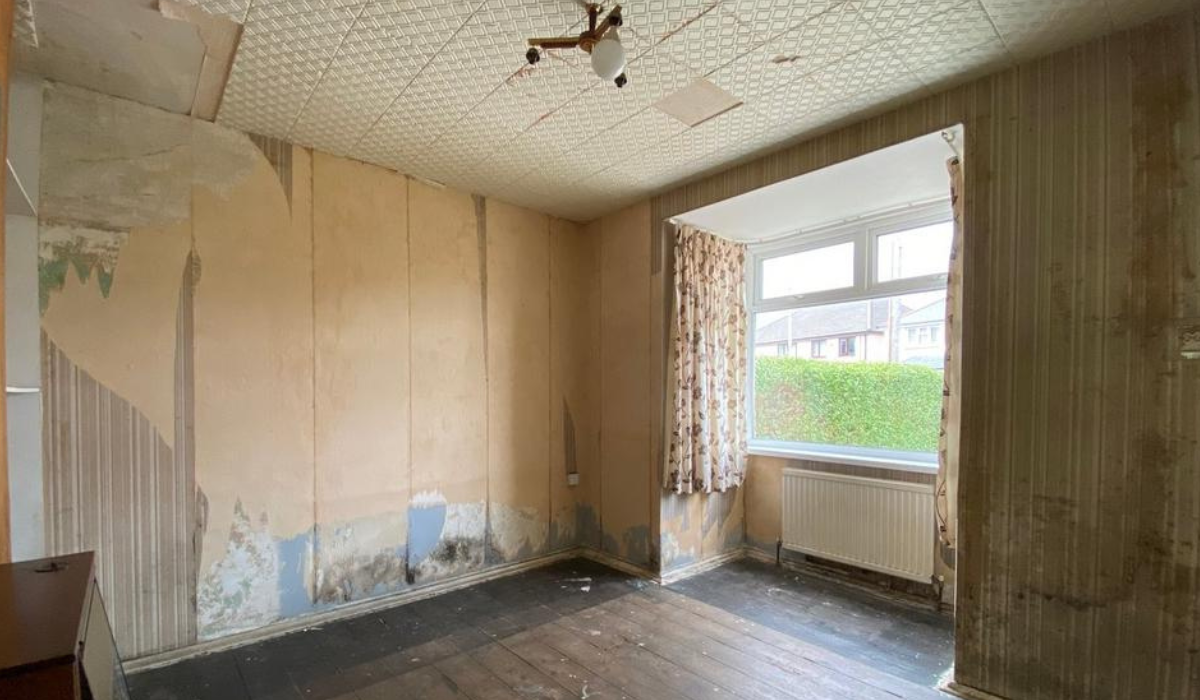Selling a house in poor condition can be challenging, but it’s not impossible. Whether it’s due to structural issues, outdated interiors, or general wear and tear, homeowners often face the dilemma of whether to invest in repairs or sell the property as-is. While a fixer-upper may not appeal to every buyer, there are still ways to attract the right audience and secure a good deal. The key lies in understanding your options, setting realistic expectations, and implementing smart selling strategies. This guide will walk you through everything you need to know to successfully sell a house in poor condition.

What does ‘poor condition’ really mean?
The term “poor condition” in real estate is subjective and varies based on market standards. In some areas, it refers to homes that are entirely uninhabitable due to major structural or safety issues. In other cases, a house may be considered in poor condition simply because it requires extensive repairs, renovations, or deep cleaning. Understanding where your property falls on this spectrum can help you determine the best approach for selling it. Here are common categories that define a house in poor condition:
- Uninhabitable homes: These properties have severe safety concerns that make them unfit for living. Problems may include extensive foundation damage, lead or asbestos issues, black mold, termite infestations, a failing roof, or a non-functioning electrical and plumbing system.
- Homes needing major repairs: Some houses are technically livable but require significant repairs that deter buyers. These could include serious electrical or plumbing issues, outdated kitchens or bathrooms, damaged roofs, failing HVAC systems, or extensive wood rot.
- Homes requiring extensive cleaning or renovation: A property may be categorised as being in poor condition if it is outdated, cluttered, or cosmetically unappealing. Issues like stained flooring, dirty interiors, peeling paint, old fixtures, or overgrown landscaping can make a house harder to sell, even if it is structurally sound.
Options for selling a property in poor condition
Once you decide to sell your house, the next step is determining how much effort and money you want to invest in improving its condition before listing it. There are different approaches you can take based on your budget and timeline.
Selling as-is
One of the simplest options is to sell the house as-is, meaning you list it without making any repairs or renovations. This approach has key advantages:
- It saves you from spending on costly renovations.
- You can sell the property quickly without waiting for repairs to be completed.
- Buyers interested in fixer-uppers or redevelopment projects might be more willing to purchase.
However, selling as-is also means fewer potential buyers, as many prefer move-in-ready homes. Additionally, you may have to lower the price significantly to attract interest. It is essential to set a realistic price and market the property to investors, builders, or buyers looking for budget-friendly options.
Making cosmetic improvements
If you want to attract more buyers without investing heavily, minor cosmetic upgrades can make a significant difference. Simple improvements like deep cleaning, repainting walls, fixing broken fixtures, and improving landscaping can enhance the property’s appeal.
While these upgrades won’t fix major structural issues, they can create a better first impression, making it easier to sell. However, it’s crucial to be transparent about any major issues, as buyers will likely conduct home inspections before finalising the purchase.
Investing in major repairs and upgrades
For homeowners who can afford to invest in their property before selling, making substantial repairs—such as fixing electrical systems, plumbing, roofs, or flooring—can significantly increase the home’s value. A well-maintained property attracts more buyers and may fetch a better price.
However, major renovations require time and money, which may not always be feasible. It’s essential to prioritise necessary repairs and avoid over-improving the property beyond what the local market can support. Consulting a real estate expert can help determine which upgrades are worth the investment.
How to decide if you should make repairs before selling a house in poor condition?
Before selling a house in poor condition, you need to decide whether making repairs is worth the investment. Here are key factors to consider:
- Market conditions: In a seller’s market, where demand for homes is high, buyers may be more willing to purchase properties that need repairs. However, in a buyer’s market, where buyers have more options, making improvements can help your property stand out.
- Cost vs. return on investment: Evaluate how much repairs will cost compared to the potential increase in your selling price. Minor cosmetic upgrades, like painting or deep cleaning, are usually worth it. However, major renovations, such as fixing structural issues, should only be considered if they provide a good return on investment.
- Buyer expectations in your area: Understand what buyers in your locality expect. In premium neighbourhoods, buyers may demand move-in-ready homes, making repairs necessary. However, in budget-friendly areas, some buyers may be open to purchasing homes that need work at a lower price.
- Your financial situation: If you have the funds to make necessary repairs without financial strain, it may be worth improving the property to secure a better price. If not, selling as-is might be the better option.
- Time constraints: If you need to sell the property quickly, making extensive repairs could delay the process. In such cases, minor improvements or an as-is sale may be preferable.
- Type of repairs needed: Different repairs have different impacts. Addressing safety concerns (like faulty wiring or plumbing issues) can make the property more appealing. On the other hand, purely aesthetic upgrades may not always justify the cost.
Tips to sell a house in bad condition
Selling a house in poor condition can be challenging, but with the right approach, you can still attract buyers and secure a fair deal. Here are some key strategies to make the sale smoother and more profitable.
1. Setting the right price
Pricing a house in poor condition requires a careful balance between attracting buyers and maximising your returns. Overpricing can drive buyers away, while underpricing may lead to unnecessary losses. To determine the right price:
- Assess comparable sales: Look at recently sold homes in your area with similar conditions to gauge a fair market price.
- Factor in repair costs: Consider how much buyers would need to invest in repairs and price accordingly. A discounted price can make the property more appealing.
- Get a professional valuation: A real estate agent or property appraiser can provide an accurate estimate based on market trends and the home’s condition.
2. Target the right buyers
When selling a house in poor condition, it’s essential to focus on buyers who are more likely to see value in the property. Instead of aiming for traditional homebuyers looking for a move-in-ready house, consider these potential buyers:
- Investors and flippers: Real estate investors and house flippers often seek distressed properties at a lower price, intending to renovate and resell them for profit.
- Buyers looking for affordable homes: Some homebuyers, especially those on a tight budget, may be willing to purchase a fixer-upper and gradually improve it over time.
- Developers: If your property is in a high-demand area, developers might be interested in purchasing it for land value alone, especially if it can be redeveloped.
- Rental property owners: Landlords looking to expand their rental portfolio might consider a property in poor condition if it has strong rental potential after renovations.
3. Highlight the property’s potential
Even if your house is in poor condition, emphasising its strengths can attract buyers who see its long-term value. Many buyers are willing to invest in a property if they recognise its potential. Here’s how you can highlight what makes your house a worthwhile investment:
- Location advantages: If your property is in a desirable neighborhood, close to schools, markets, or public transport, emphasise these benefits.
- Spacious layout: If your home has a good layout, natural light, or ample space, highlight these aspects as they can be valuable selling points.
- Unique architectural features: Some older homes have vintage charm, high ceilings, or solid woodwork that can be restored and appreciated.
- Future appreciation: If the area is developing or property prices are expected to rise, mention the investment potential.
- Scope for customisation: Buyers looking for a fixer-upper often appreciate the opportunity to renovate a home according to their tastes.
4. Negotiating with Buyers
When selling a house in poor condition, expect buyers to negotiate aggressively. Many will try to lower the price further by pointing out repair costs and renovation expenses. Here’s how to navigate negotiations effectively:
- Know your bottom line: Before listing, decide on the lowest price you’re willing to accept and stick to it during negotiations.
- Highlight the positives: Emphasise the property’s strengths, such as location, lot size, or investment potential, to justify your asking price.
- Offer incentives: Consider offering flexible payment terms, covering certain closing costs, or providing minor repairs to make the deal more appealing.
- Stay open to cash offers: Investors and home flippers may offer quick, hassle-free transactions, often in cash, which can be advantageous if you need to sell fast.
5. Disclose property issues honestly
Honesty is crucial when selling a house in poor condition. Buyers appreciate transparency, and hiding issues can lead to legal trouble or a deal falling apart later.
- Provide full disclosure: Clearly list any major problems such as structural damage, plumbing issues, or electrical faults. This builds trust with potential buyers.
- Share inspection reports: If possible, get a pre-sale home inspection and share the report with buyers. This prevents surprises later and helps in pricing negotiations.
- Avoid misrepresentation: Trying to cover up major flaws can lead to legal consequences. It’s better to be upfront and let buyers make an informed decision.
- Highlight what’s fixable: If certain repairs are minor or inexpensive, let buyers know. This can make the property seem like a worthwhile investment despite its condition.
6. Hire the right real estate agent
Selling a house in poor condition requires expertise, making it essential to work with a real estate agent who has experience in handling distressed properties. The right agent can help you navigate challenges, market the property effectively, and attract suitable buyers.
- Choose an agent with relevant experience: Look for agents who have successfully sold homes in poor condition. They will have insights into pricing, marketing, and negotiation strategies.
- Leverage their network: A knowledgeable agent can connect you with real estate investors, house flippers, and cash buyers who are more willing to purchase properties that need repairs.
- Get expert pricing advice: An agent can provide a comparative market analysis (CMA) to help set a competitive price, balancing the property’s condition and market demand.
- Marketing strategies: A skilled agent knows how to highlight the home’s potential, using strong listing descriptions and targeted outreach to attract the right buyers.
Housing.com POV
Selling a house in poor condition may seem challenging, but with the right approach, it is entirely possible to find a buyer and secure a fair deal. Whether you choose to sell as-is, make minor cosmetic improvements, or invest in major repairs, it’s important to assess your budget, timeline, and goals before making a decision. Setting the right price, targeting suitable buyers, highlighting the property’s potential, and being transparent about its condition can help streamline the process. Additionally, working with an experienced real estate agent can make a significant difference in attracting the right buyers and negotiating effectively. By following these strategies, you can successfully sell your home, even in less-than-perfect condition.
FAQs
Can I sell a house in poor condition if I still have an active home loan?
Yes, you can sell a house with an active home loan. The outstanding loan amount will be deducted from the sale proceeds, and the buyer may also opt for a loan transfer if the lender allows it.
Are there legal requirements I should fulfill before selling a house in poor condition?
Yes, ensure that the property has clear ownership documents, updated property tax payments, and all necessary approvals from local authorities. If the house has structural issues, check if any legal disclosures are required by state laws.
How can I make my home look more presentable without spending much?
Simple steps like decluttering, deep cleaning, repainting dull walls, and improving lighting can make a significant difference. Fixing minor damages, such as leaky taps or loose doorknobs, can also enhance the home’s appeal without a major investment.
Will selling to an investor or cash buyer speed up the process?
Yes, real estate investors and cash buyers are often willing to purchase properties in poor condition without demanding repairs. This can help you close the deal faster, but the selling price may be lower than the market value.
Does selling a distressed house take longer than a well-maintained one?
It depends on factors like pricing, marketing efforts, and buyer demand. While some buyers may hesitate, the right pricing strategy and targeting investors or budget-conscious buyers can help in securing a sale within a reasonable timeframe.
| Got any questions or point of view on our article? We would love to hear from you. Write to our Editor-in-Chief Jhumur Ghosh at jhumur.ghosh1@housing.com |







